
Exploring the Charm of Ledra Street in Nicosia
Discover the vibrant heart of Nicosia on Ledra Street, where history, culture, and modernity blend seamlessly in Cyprus's bustling capital.
Ledra Street is the beating heart of Nicosia, the vibrant capital of Cyprus. This bustling pedestrian thoroughfare is steeped in history and culture, offering visitors a unique blend of the old and the new. As you stroll down the cobblestone streets lined with historic buildings, you'll find an array of shops, cafes, and restaurants that cater to all tastes and budgets. The area is a haven for shoppers, with everything from high-end boutiques to quaint souvenir shops offering a variety of local and international products. One of the most fascinating aspects of Ledra Street is its role as a symbolic divide between the Greek Cypriot and Turkish Cypriot communities. At the end of the street, you'll find the Ledra Street crossing point, where you can cross the United Nations buffer zone and explore both sides of this divided city. This unique feature makes Ledra Street not just a shopping and dining destination, but also a place of historical and political significance. For those interested in history and architecture, Ledra Street offers several points of interest. The Shacolas Tower Museum and Observatory provides panoramic views of the city, while the nearby Cyprus Museum showcases artifacts from the island's rich past. Street performers and local artists often add to the lively atmosphere, making Ledra Street a must-visit for anyone exploring Nicosia.
Local tips in Ledra Street
- Visit early in the morning or late in the afternoon to avoid the midday heat.
- Carry your passport if you plan to cross the Ledra Street checkpoint into Northern Nicosia.
- Wear comfortable shoes as the cobblestone streets can be uneven.
- Don't miss the Shacolas Tower Museum and Observatory for stunning views of the city.
- Sample local Cypriot delicacies at one of the many cafes and restaurants.
Exploring the Charm of Ledra Street in Nicosia
Ledra Street is the beating heart of Nicosia, the vibrant capital of Cyprus. This bustling pedestrian thoroughfare is steeped in history and culture, offering visitors a unique blend of the old and the new. As you stroll down the cobblestone streets lined with historic buildings, you'll find an array of shops, cafes, and restaurants that cater to all tastes and budgets. The area is a haven for shoppers, with everything from high-end boutiques to quaint souvenir shops offering a variety of local and international products. One of the most fascinating aspects of Ledra Street is its role as a symbolic divide between the Greek Cypriot and Turkish Cypriot communities. At the end of the street, you'll find the Ledra Street crossing point, where you can cross the United Nations buffer zone and explore both sides of this divided city. This unique feature makes Ledra Street not just a shopping and dining destination, but also a place of historical and political significance. For those interested in history and architecture, Ledra Street offers several points of interest. The Shacolas Tower Museum and Observatory provides panoramic views of the city, while the nearby Cyprus Museum showcases artifacts from the island's rich past. Street performers and local artists often add to the lively atmosphere, making Ledra Street a must-visit for anyone exploring Nicosia.
Iconic landmarks you can’t miss
Eleftheria Square
Immerse yourself in the vibrant atmosphere of Eleftheria Square, a lush, artistic park in the heart of Nicosia, Cyprus, ideal for relaxation and exploration.

Ledra Street
Discover the historical charm and modern vibrancy of Ledra Street, the heart of Nicosia where culture, shopping, and history collide beautifully.

Shacolas Tower Museum and Observatory
Experience breathtaking views and rich history at the Shacolas Tower Museum and Observatory, a must-visit attraction in Nicosia, Cyprus.
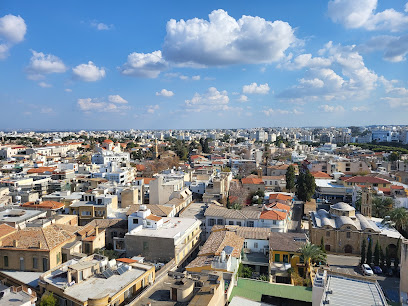
The Leventis Municipal Museum of Nicosia
Explore the depths of Cyprus's history at The Leventis Municipal Museum of Nicosia, where centuries of culture come alive through captivating exhibits.

The Liberty Monument
Discover The Liberty Monument in Nicosia, a powerful symbol of freedom and resilience, capturing the spirit of Cyprus's rich history.

Nicosia Old City
Experience the rich history, vibrant culture, and architectural beauty of Nicosia Old City, where every corner tells a story.

Lokmaci Crossing meeting point
Explore the vibrant Lokmaci Crossing in Nicosia, where history meets culture at the heart of Cyprus's divided capital.

Ledra Palace Crossing Point
Experience the poignant history and vibrant culture at the Ledra Palace Crossing Point in Nicosia, Cyprus - a gateway to the island's unique heritage.

Ledras одна из самых посещаемых улиц Никосии
Explore Ledras Street in Nicosia, a bustling pedestrian avenue filled with shops, cafés, and rich history, showcasing the heart of Cyprus.

Archaeological Site of Palaion Demarcheion
Discover the ancient wonders of Palaion Demarcheion, a historical landmark in Nicosia that offers a glimpse into Cyprus's rich archaeological heritage.

Unmissable attractions to see
Lokmaci Crossing meeting point
Experience the unique blend of cultures at Lokmaci Crossing in Nicosia, a historic meeting point that tells the story of Cyprus's divided heritage.
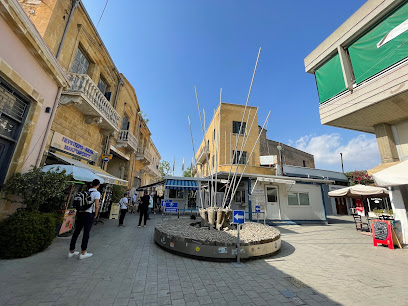
United Nations 65
Explore United Nations 65 in Nicosia, a key site of international diplomacy and peacekeeping efforts, reflecting the spirit of global cooperation.

Lidra lark
Experience the vibrant culture, shopping, and dining at Lidra Lark, the heart of Nicosia's lively atmosphere and rich heritage.

Essential places to dine
Piatsa Gourounaki
Experience authentic Cypriot flavors at Piatsa Gourounaki in Nicosia - where every meal is a celebration of local culinary traditions.
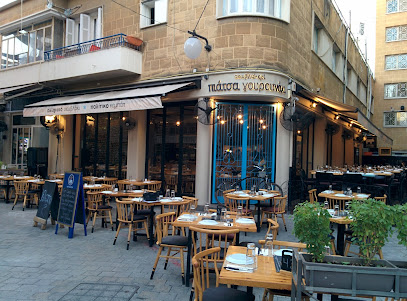
To Anamma Traditional Restaurant
Experience authentic Greek flavors at To Anamma Traditional Restaurant in Nicosia – where every dish tells a story.

Kathodon Greek Restaurant & Coffee Shop
Experience authentic Greek cuisine in Nicosia at Kathodon Restaurant & Coffee Shop—where tradition meets taste.

Avo Armenian Food
Experience authentic Armenian cuisine at Avo in Nicosia – where every dish tells a story of rich flavors and tradition.

Fanous Lebanese Restaurant
Experience authentic Lebanese cuisine at Fanous Restaurant in Nicosia – where every dish tells a story of rich cultural heritage.

Il Forno Restaurant
Experience authentic Italian cuisine at Il Forno Restaurant in Nicosia – a culinary journey filled with rich flavors and warm hospitality.

Fisa & Masa
Experience exquisite Cypriot cuisine at Fisa & Masa in Nicosia – where tradition meets modern culinary artistry.
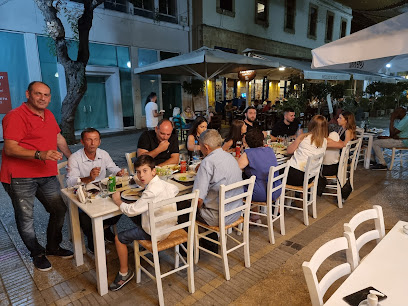
Tsolias
Experience authentic Greek flavors at Tsolias in Nicosia – where every meal is a celebration of Mediterranean cuisine.

Bella Vita
Experience authentic Italian cuisine at Bella Vita, nestled in Old Town Nicosia's enchanting garden setting, perfect for food lovers and wine enthusiasts alike.

Mathaios Restaurant
Experience authentic Cypriot cuisine at Mathaios Restaurant in Nicosia – where every dish tells a story of tradition and flavor.
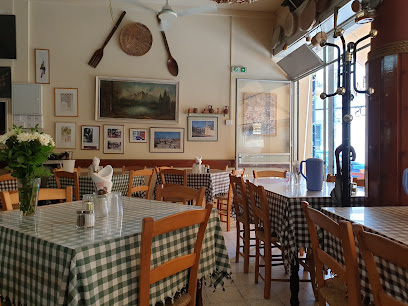
Markets, malls and hidden boutiques
POW! The Shop Nicosia City Centre Store
Explore POW! The Shop in Nicosia for unique gifts and toys that capture the spirit of Cyprus, perfect for tourists and locals alike.

Turkish Bazaar
Explore the Turkish Bazaar: A vibrant shopping hub in North Nicosia filled with local crafts, delicious foods, and rich cultural experiences.

Spike, The Official Sneaker Store
Discover the latest sneaker trends at Spike, Nicosia’s official sneaker store, where style meets comfort in every step.

Le Monde d'Amélie
Explore Le Monde d'Amélie, a charming gift shop in Nicosia, offering unique handmade gifts, jewelry, and artwork that reflect local craftsmanship.
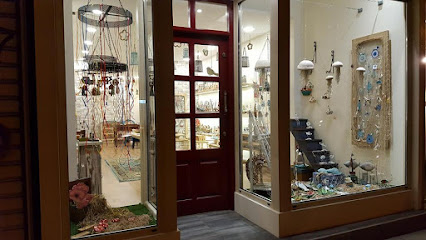
FABoutique - Ermou 300
Discover unique home goods and furniture accessories at FABoutique in Nicosia, Cyprus - where elegance meets style in every detail.
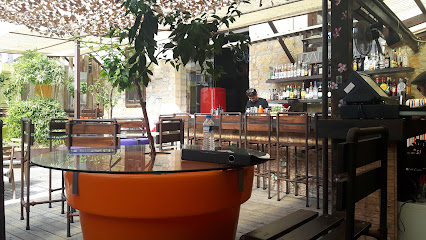
Groovy The Store (Larnakos Shop)
Explore Groovy The Store in Nicosia for unique gifts and local treasures that embody the spirit of Cyprus, perfect for tourists seeking memorable souvenirs.

thecollective vintage & pre-loved
Explore a world of vintage fashion at The Collective Vintage & Pre-Loved, where every piece has a story and sustainability meets style.

Indian Shop
Explore the vibrant world of Indian fashion accessories in Nicosia, where culture meets style and every piece tells a story.

Lepus Accessories
Explore a delightful gift shop in Nicosia, Cyprus, offering unique accessories and souvenirs that capture the local culture and craftsmanship.

All Senses by Trokkoudes
Explore All Senses by Trokkoudes - a unique shopping destination in Nicosia, Cyprus, offering authentic local crafts and souvenirs.

Essential bars & hidden hideouts
Lost + Found Drinkery
Experience the lively atmosphere and creative cocktails at Lost + Found Drinkery, a vibrant bar in the heart of Nicosia, Cyprus.

Patio Cocktail Bar
Discover the perfect blend of cocktails and tapas at Patio Cocktail Bar in Nicosia, a must-visit for tourists seeking nightlife and culinary delight.

BrewFellas Beer Bar
Discover the vibrant atmosphere and diverse beer selection at BrewFellas Beer Bar, a must-visit for beer lovers in Nicosia, Cyprus.

New Division
Discover New Division Bar in Nicosia: A vibrant hotspot offering delightful drinks and a charming garden perfect for socializing under the stars.

Plato's Bar
Experience the vibrant nightlife and exquisite cocktails at Plato's Bar in Old Nicosia, a must-visit hotspot for every traveler.

CHEERS BAR
Discover the vibrant nightlife of Nicosia at Cheers Bar, where every drink tells a story and every night is a celebration.

Bubbly Happy
Discover the lively spirit of Nicosia at Bubbly Happy, where cocktails, live music, and good vibes create unforgettable nights.

Herb Bar
Experience the vibrant nightlife of Nicosia at Herb Bar, a unique destination for cocktails, local flavors, and unforgettable memories.

Roots 'n Stones
Discover the vibrant cocktail culture of Nicosia at Roots 'n Stones, a premier destination for creative drinks and lively ambiance.

Volvèr
Discover Volvèr in Nicosia, Cyprus—a lively bar known for unique cocktails, deep music, and an unforgettable nightlife experience.
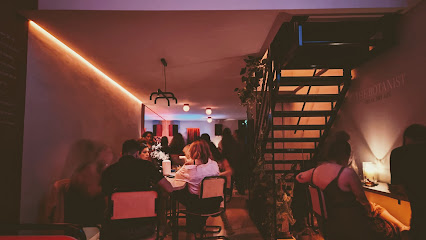
Local Phrases
-
- HelloΓεια σας
[Ya sas] - GoodbyeΑντίο
[Adio] - YesΝαι
[Ne] - NoΌχι
[Ochi] - Please/You're welcomeΠαρακαλώ
[Parakalo] - Thank youΕυχαριστώ
[Efharisto] - Excuse me/SorryΣυγνώμη
[Signomi] - How are you?Πώς είστε;
[Pos iste?] - Fine. And you?Καλά. Εσείς;
[Kala. Esis?] - Do you speak English?Μιλάτε Αγγλικά;
[Milate Agglika?] - I don't understandΔεν καταλαβαίνω
[Den katalaveno]
- HelloΓεια σας
-
- I'd like to see the menu, pleaseΘα ήθελα να δω το μενού, παρακαλώ
[Tha ithela na do to menu, parakalo] - I don't eat meatΔεν τρώω κρέας
[Den troo kreas] - Cheers!Υγεία!
[Iyia!] - I would like to pay, pleaseΘα ήθελα να πληρώσω, παρακαλώ
[Tha ithela na plirosow, parakalo]
- I'd like to see the menu, pleaseΘα ήθελα να δω το μενού, παρακαλώ
-
- Help!Βοήθεια!
[Voithia!] - Go away!Φύγε!
[Fiye!] - Call the Police!Καλέστε την Αστυνομία!
[Kaleste tin Astinomia!] - Call a doctor!Καλέστε γιατρό!
[Kaleste giatro!] - I'm lostΈχω χαθεί
[Eho hathi] - I'm illΕίμαι άρρωστος
[Ime arrostos]
- Help!Βοήθεια!
-
- I'd like to buy...Θα ήθελα να αγοράσω...
[Tha ithela na agorasow...] - I'm just lookingΑπλά κοιτάζω
[Apla kitazo] - How much is it?Πόσο κοστίζει;
[Poso kostizi?] - That's too expensiveΑυτό είναι πολύ ακριβό
[Afto ine poli akribo] - Can you lower the price?Μπορείτε να μειώσετε την τιμή;
[Borite na meiosete tin timi?]
- I'd like to buy...Θα ήθελα να αγοράσω...
-
- What time is it?Τι ώρα είναι;
[Ti ora ine?] - It's one o'clockΕίναι μία ώρα
[Ine mia ora] - Half past (10)Μισή (10)
[Misi (10)] - MorningΠρωί
[Proi] - AfternoonΑπόγευμα
[Apoyevma] - EveningΒράδυ
[Vradi] - YesterdayΧθες
[Hthes] - TodayΣήμερα
[Simera] - TomorrowΑύριο
[Avrio] - 1Ένα
[Ena] - 2Δύο
[Dio] - 3Τρία
[Tria] - 4Τέσσερα
[Tessera] - 5Πέντε
[Pente] - 6Έξι
[Exi] - 7Επτά
[Epta] - 8Οκτώ
[Okto] - 9Εννιά
[Ennia] - 10Δέκα
[Deka]
- What time is it?Τι ώρα είναι;
-
- Where's a/the...?Πού είναι ένα/το...;
[Pou ine ena/to...?] - What's the address?Ποια είναι η διεύθυνση;
[Pia ine i diefthinsi?] - Can you show me (on the map)?Μπορείτε να μου δείξετε (στο χάρτη);
[Borite na mou deksete (sto charti)?] - When's the next (bus)?Πότε είναι το επόμενο (λεωφορείο);
[Pote ine to epomeno (leoforeio)?] - A ticket (to ....)Ένα εισιτήριο (για το...);
[Ena isitirio (ya to...)?]
- Where's a/the...?Πού είναι ένα/το...;
History of Ledra Street
-
Ledra Street's significance began to flourish during the Ottoman period, which lasted from 1571 to 1878. As the administrative and commercial heart of Nicosia, Ledra Street became a bustling marketplace where traders exchanged goods from various regions. The street's architecture reflects the Ottoman influence, with many buildings featuring characteristic arched doorways and intricate tile work.
-
In 1878, Cyprus came under British administration, leading to a period of modernization in Nicosia. Ledra Street was at the forefront of this development, with new shops, cafes, and colonial-style buildings emerging. The British introduced new infrastructure, including roads and public services, which transformed the street into a vibrant hub for both locals and tourists.
-
In 1974, the Turkish invasion of Cyprus resulted in the division of Nicosia into two parts, with Ledra Street becoming a focal point of this geopolitical split. The once-bustling thoroughfare was largely abandoned on the northern side, while the southern section remained a commercial center. This division symbolized the broader political and ethnic tensions that characterized Cyprus in the latter half of the 20th century.
-
In 2008, Ledra Street was reopened to pedestrians, marking a significant step towards reconciliation and cultural revival. The reopening allowed for a flow of people between the two sides of Nicosia, fostering a renewed sense of community. Local businesses began to thrive again, and cultural events were organized, highlighting the rich heritage of the area and promoting dialogue between the Greek and Turkish Cypriot communities.
-
Today, Ledra Street is a blend of old and new, where traditional Cypriot culture coexists with modern influences. The area is known for its vibrant street life, with cafes, shops, and art galleries lining the street. Cultural festivals and events are frequently held, showcasing the diverse heritage of Nicosia and promoting a sense of unity amidst its complex history.
Ledra Street Essentials
-
Ledra Street is centrally located in Nicosia and can be easily accessed from various neighborhoods. If you are coming from the Old City, simply walk towards the border crossing at Ledra Street. For those coming from the new part of Nicosia, you can take a bus to the central bus station and walk towards the pedestrianized Ledra Street. Taxis are also widely available and can drop you off at the nearest access point.
-
Ledra Street is a pedestrian-only zone, making it easy to explore on foot. The area is well-connected to the rest of Nicosia via public buses, which frequently run from various neighborhoods. Bicycles can be rented from local shops, and there are bike lanes leading into the area. Note that parking is not available on Ledra Street itself.
-
Ledra Street is generally safe for tourists, but standard precautions should be taken. Avoid walking alone late at night, especially in less crowded areas. While there are no specific high-crime areas targeting tourists, petty crimes such as pickpocketing can occur, particularly in crowded areas. Stay vigilant and keep your belongings secure.
-
In case of an emergency, dial 112 for immediate assistance. Local police and medical facilities are available nearby. It is advisable to have travel insurance covering medical emergencies. For minor health issues, there are several pharmacies along Ledra Street where you can find over-the-counter medications.
-
Fashion: Do dress modestly, especially when visiting churches or religious sites nearby. Don't wear overly revealing clothing. Religion: Do respect local customs, including appropriate behavior in religious areas. Public Transport: Do be polite and courteous, giving up your seat for the elderly. Don't eat or drink on public transport. Greetings: Do greet locals with a friendly smile and a handshake. Don't forget that a slight nod can show respect. Eating & Drinking: Do try local dishes at the various eateries. Don't waste food, as it is considered disrespectful.
-
To experience Ledra Street like a local, take time to explore the back alleys and smaller shops offering handmade crafts and local delicacies. Engage with shop owners and locals, as they often provide insights and stories about the area. Visit the nearby historical sites, such as the Leventis Municipal Museum, to gain a deeper understanding of Nicosia's rich history.
Trending Landmarks in Ledra Street
Nearby Cities to Ledra Street
-
Things To Do in Kyrenia
-
Things To Do in Larnaca
-
Things To Do in Troodos
-
Things To Do in Famagusta
-
Things To Do in Ayia Napa
-
Things To Do in Limassol
-
Things To Do in Protaras
-
Things To Do in Pissouri
-
Things To Do in Polis Chrysochous
-
Things To Do in Paphos
-
Things To Do in Kato Paphos
-
Things To Do in Alanya
-
Things To Do in Batroun
-
Things To Do in Byblos
-
Things To Do in Beirut











